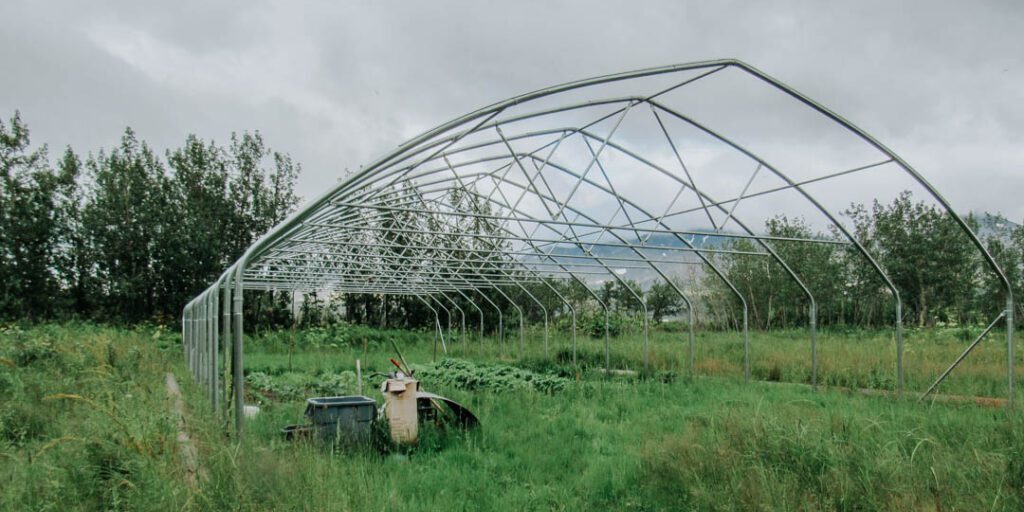What does it take to grow a garden in Bering Strait Alaska? That’s the question facing the staff of Pilgrim Hot Springs. They received the “Gather Grant” from the First Nations Development Institute, or FNDI, this summer. The grant allowed them to plant a produce garden that distributes fresh vegetables throughout the Bering Strait region.
Pilgrim staff planted this summer’s garden as an attempt to revive their produce garden from 2016-2018. Staff planted a small “test crop” to determine what kind of produce will be most successful. Pilgrim Hot Springs General Manager Amanda Toerdal explained the factors that go into such a decision.
“So this grant we have now to do the small test garden, we’re hoping will kind of jumpstart things again and we can see which vegetables are doing the best. And then after we harvest this year, we are hoping to work with possibly Norton Sound Health Corporation and their weekly produce market or just hand out vegetables to the community and do a little bit of surveying and kind of see what folks want the most, what is the most popular vegetable.” Toerdal said.
Toerdal and her staff are hoping to get the bigger garden up and running by next summer. Right now, the most important thing on Toerdal’s mind is to decide on a plan that can distribute produce through as much of the region as possible.
“So that’s going to be the main goal is to find a distribution model that works. So, if that’s sending out our vegetables weekly on planes or working with a local distributor or the village stores, we’re not sure yet,” Toerdal said.
Efforts to distribute produce as widely as possible may be aided by future produce preservation efforts, Toerdal said. Pilgrim Staff may be able to use Pilgrim Hot Springs’ geothermal resources to build greenhouses in coming years to grow vegetables in the winter. Canning and preserving efforts are also a part of Pilgrim Hot Spring’s history, Toerdal said. They may be used in the future to extend the shelf life of Pilgrim’s garden produce.
Even though the growing season for Pilgrim Hot Springs’ vegetables is short, Pilgrim Hot Springs is an ideal place to undertake a gardening project.
“Many have called Pilgrim a microclimate in itself, just because of the way it is sheltered from the mountains. And then because of the geothermal hotspot we have the trees that protect from the wind and the soil is warm, you know, it doesn’t freeze. There is no permafrost in that area,” Toerdal said.

The soil is rich with minerals, due to the hot springs, and the recent rainy weather has provided the vegetables with plenty of water. Toerdal hopes that this combination of good factors will have a positive outcome for the Pilgrim Hot Spring Community. More specifically, she is hoping for a wide distribution of produce, an environment where individuals can learn more about growing and preparing vegetables and a model for other communities to follow should they try to grow a vegetable garden.
Image at Top: Pilgrim Hot Spring’s Test Crop. Photo: Miriam Trujillo, KNOM (2021).




